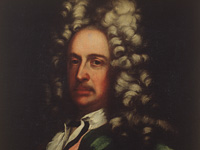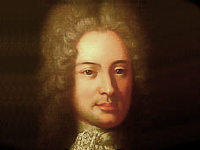History | The Baroque World in the Grand Hall
|
The Baroque State Hall is among the world's most beautiful historic libraries. Emperor Charles VI (1685/1711 – 1740) ordered the construction of this jewel of secular Baroque architecture for his Court Library. The State Hall was built from 1723 till 1726 according to the plans of the famous court architect Johann Bernhard Fischer von Erlach, and carried out by his son Joseph Emanuel. The ceiling frescoes were completed in 1730 by the court painter Daniel Grans. The frescoes in the wing of the entrance show worldly and military themes, while in the rear peace wing, which is adjacent to the Hofburg and was the original access for the Emperor and his courtiers, allegorical presentations of Heaven and peace are to be seen. The fresco in the cupola, which is 30 metres high, presents the apotheosis of Charles VI, the builder of the Court Library, with an allegory on the construction of the Library. The Baroque program of the ruling family for the decorative frescos was created by the court scholar Conrad Adolph von Albrecht (1682 – 1751). The four Baroque decorated globes placed in the middle oval were done by Vincenzo Coronelli (1650 – 1718). In conjunction with the marble statues of the brothers Peter and Paul Strudel and the walnut book cupboards, they give an authentic picture of the Baroque universal library of the 18th century. Today the State Hall is home to 200,000 books from 1501 till 1850, among them the 15,000 volumes of Prince Eugene of Savoy's (1663 – 1736) collection in the middle oval. |



